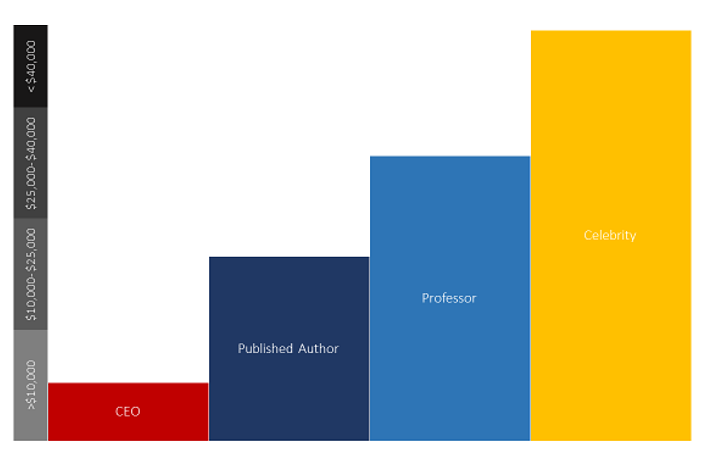When I was asked to find costs for keynotes as a younger, fresher and greener event content coordinator, I thought it would be as easy as asking Google, “How much does it cost to have [name] speak at an event?”
After all, Google holds the answer for almost everything – it can even answer questions like: Do I have Ebola? How do you know if a guy likes you? What should I eat for dinner?
Unfortunately, it turned out to not be as simple as Googling it. Many factors determined behind the scenes go into how much you’ll spend on a keynote. This is why many speaker bureaus say “contact us for fee” in order to share that number.
Whenever I searched for an estimated keynote cost for a specific speaker, or even a generic title, the search results brought up speaker agencies, which is not what I wanted.
Although Google has been faithful to me in the past, there are some questions I ask that I’m still forced to answer and research on my own.
Here are the questions I typed into the search bar – in a million different ways – which I eventually had to learn.
Why is there such secrecy around speaker fees?
Depending on location, duration of the keynote and audience size, a speaker will adjust his or her fees.
The easiest way to establish and negotiate a keynote’s cost is by contacting them directly, which has been made moderately easy with the rise of social media and the ability to get (almost) anyone’s email address with a quick search.
However, not all speakers are so easy to track down.
You might decide to use a speaker agency. These resources can be incredibly frustrating to use as an event planner because once you contact the bureau for a speaker fee, you become a sales lead. You can now expect the agent to inevitably harass you about booking one of their speakers and to generously “keep you in mind” for future events.
With so many other things that I juggle throughout the day, like establishing the rest of the Summit agenda and working with other speakers, fielding calls is the last thing I have time for.
However, speaker bureaus can be helpful if you’re working with a blank slate or have a notoriously private speaker. They specialize in finding and contacting a highly sought-after keynotes who you can’t get a hold of on your own (at a price, of course).
Is there any way that I can estimate a budget for a keynote? How much does it cost to have a [insert career vertical] keynote at my event?
Although costs vary from speaker to speaker, I’ve noticed some trends while doing research for keynote speakers on our events – basic guidelines to help estimate spend.

Speakers determine their own fees. One speaker might think that their content is worth $10,000 and is more than happy to work with you, whereas someone more qualified might think that they’re worth $250,000 and there’s no flexibility in their mind.
Apart from that human element, this chart has three explanations:
Read more…









